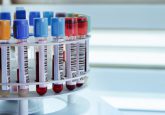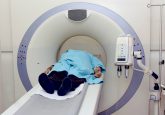Saliva may contain important biomarkers for disease

Researchers from the University of California, Los Angeles (CA, USA) have discovered that human saliva contains many of the same disease-revealing molecules that appear in blood.
The study, which represents the most comprehensive analysis of RNA molecules in human salvia, was co-led by professors David Wong and Xinshu (Grace) Xiao. Over the past decade, Wong’s laboratory has discovered that some of the same RNA that is present within human cells is also present in saliva and can be used to detect diseases. According to Wong, this is a “surprising finding”, since enzymes in saliva can degrade RNA, making the mouth a “hostile environment.” Wong proposes that this unexpected finding may be the result of circular RNAs interacting with miRNA in human saliva and effectively playing a protective role in preventing miRNA degradation.
In the team’s most recent study, miRNA levels in saliva were compared to those in the blood and other body fluids, revealing that levels of miRNA in blood are very similar to those in saliva. It was also discovered that saliva contains another class of small RNAs, called piwi-interacting RNAs (piRNAs), which are produced by stem cells, skin cells and germ cells. There are very few piRNAs in blood and most other body fluids, but Xiao’s analysis showed that piRNA are abundant in saliva. Although their function is not yet known, Xiao projects that they may protect the body from viral infection.
Based on the results of the study, the team has concluded that saliva may have tremendous medical and scientific value. “If we can define the boundaries of molecular targets in saliva, then we can ask what the constituents in saliva are that can mark someone who has pre-diabetes or the early stages of oral cancer or pancreatic cancer and we can utilize this knowledge for personalized medicine,” explained Wong.
Source: ‘Treasure in saliva’ may reveal deadly diseases early enough to treat them, UCLA scientist report.






